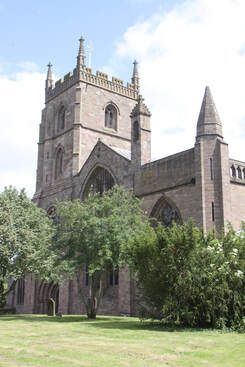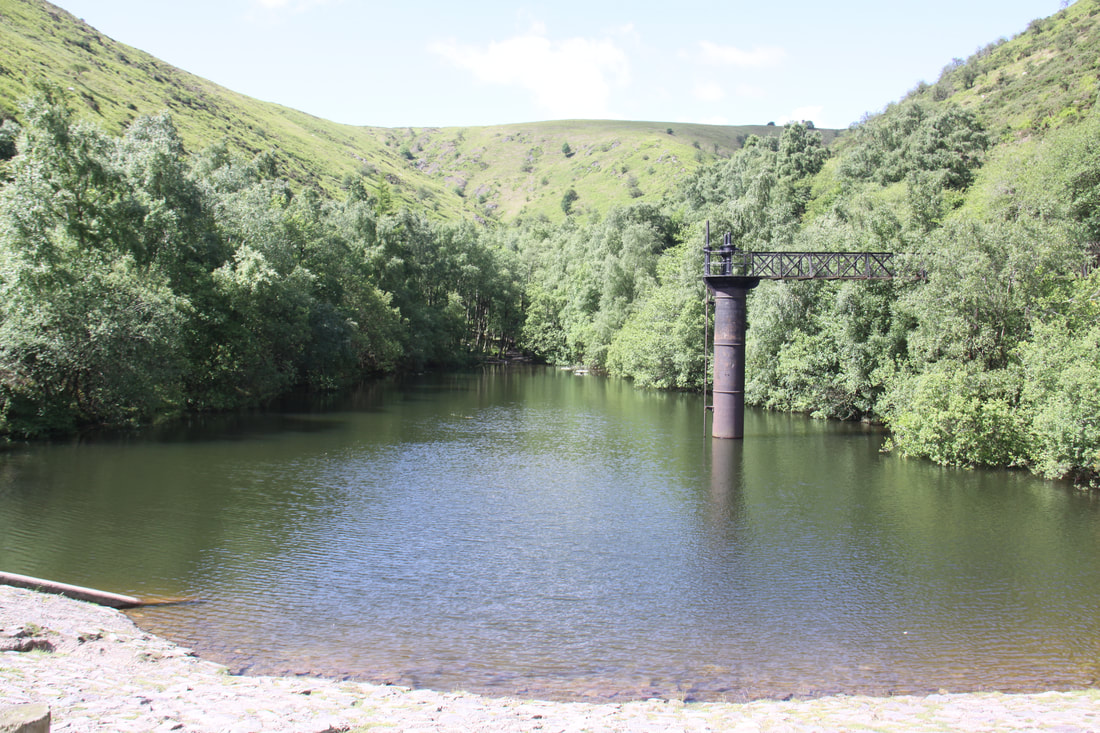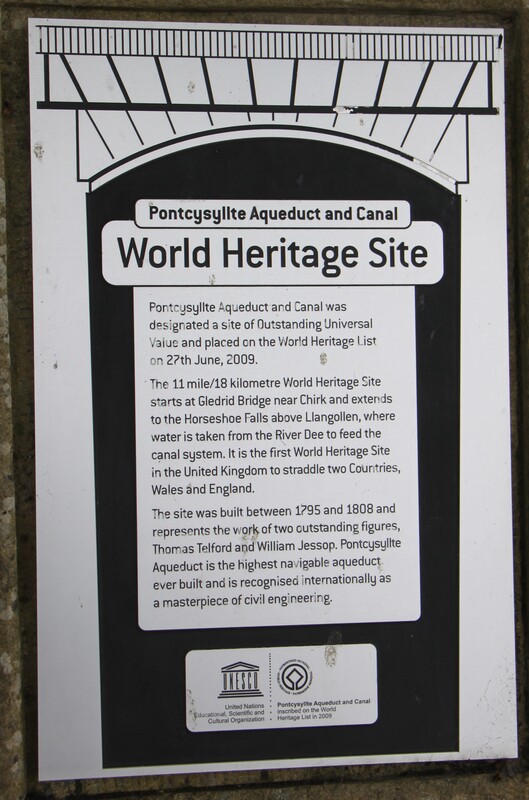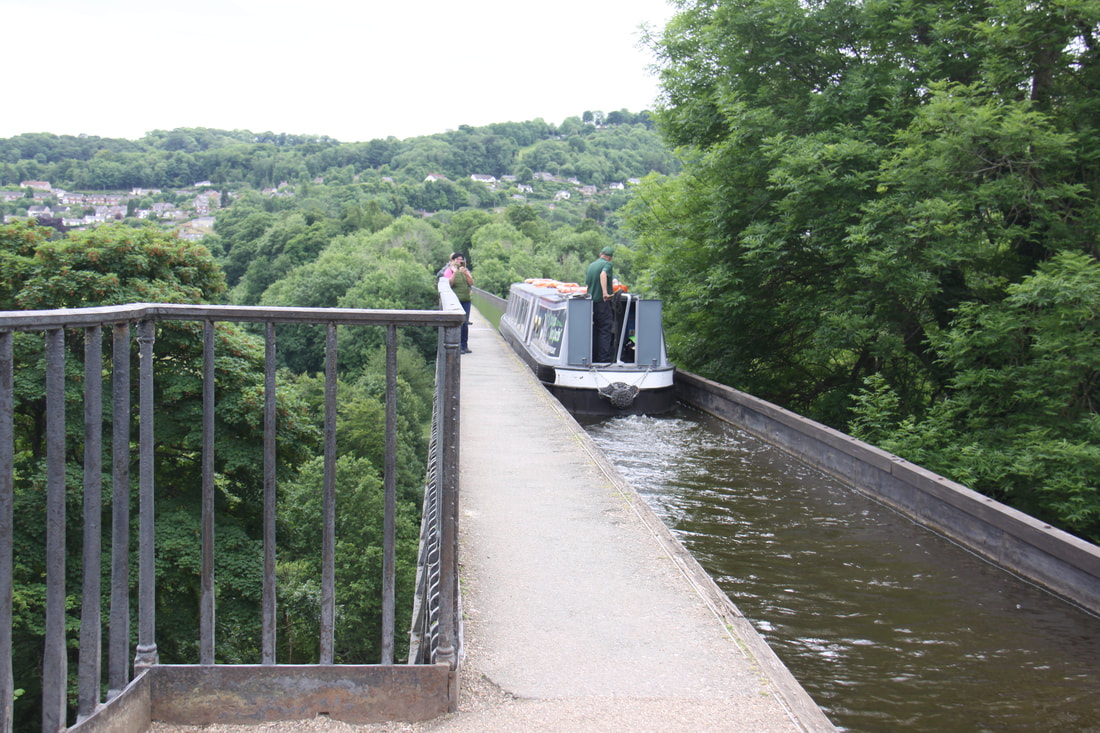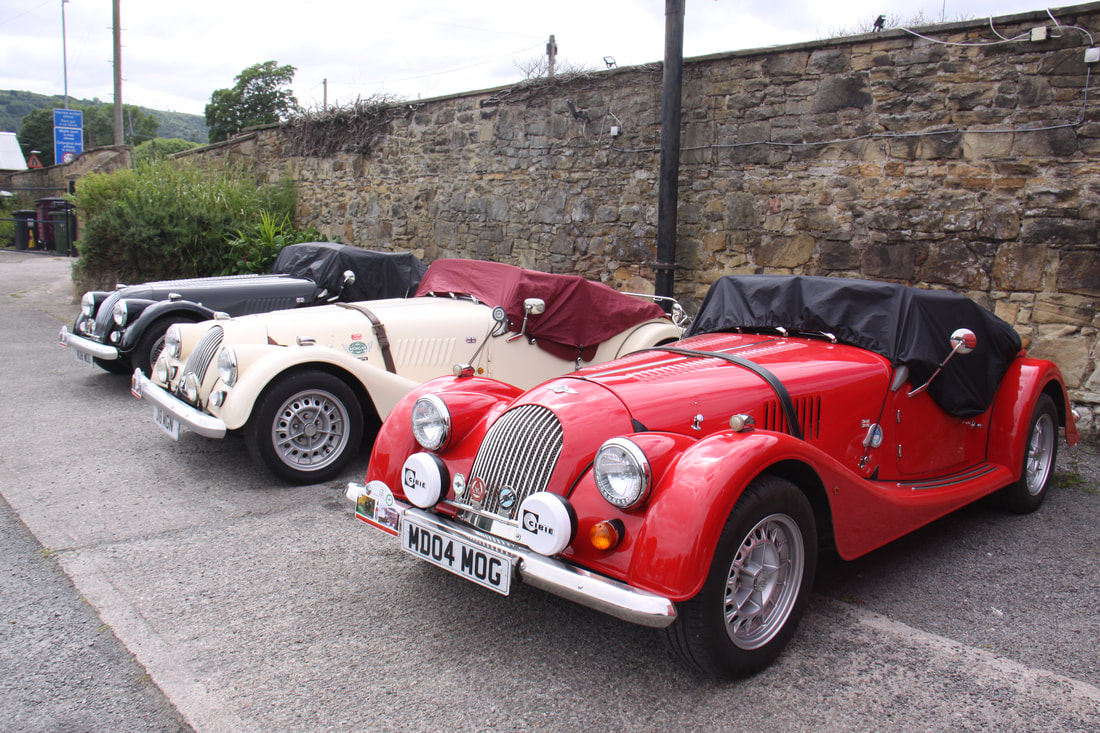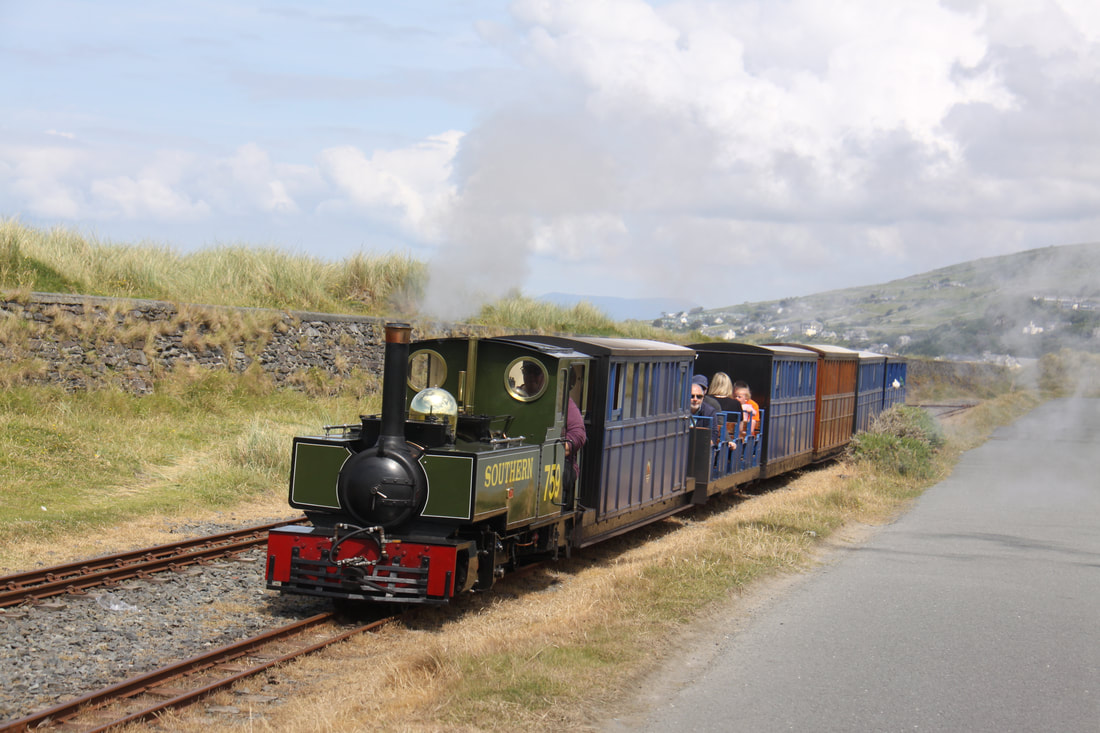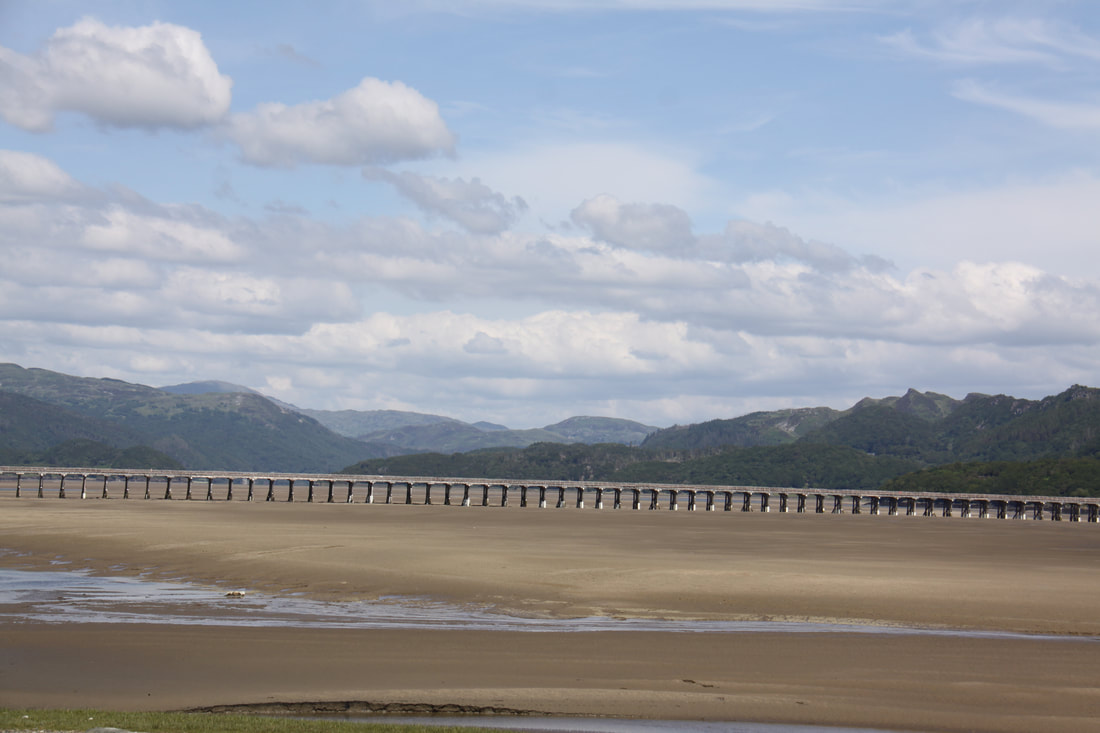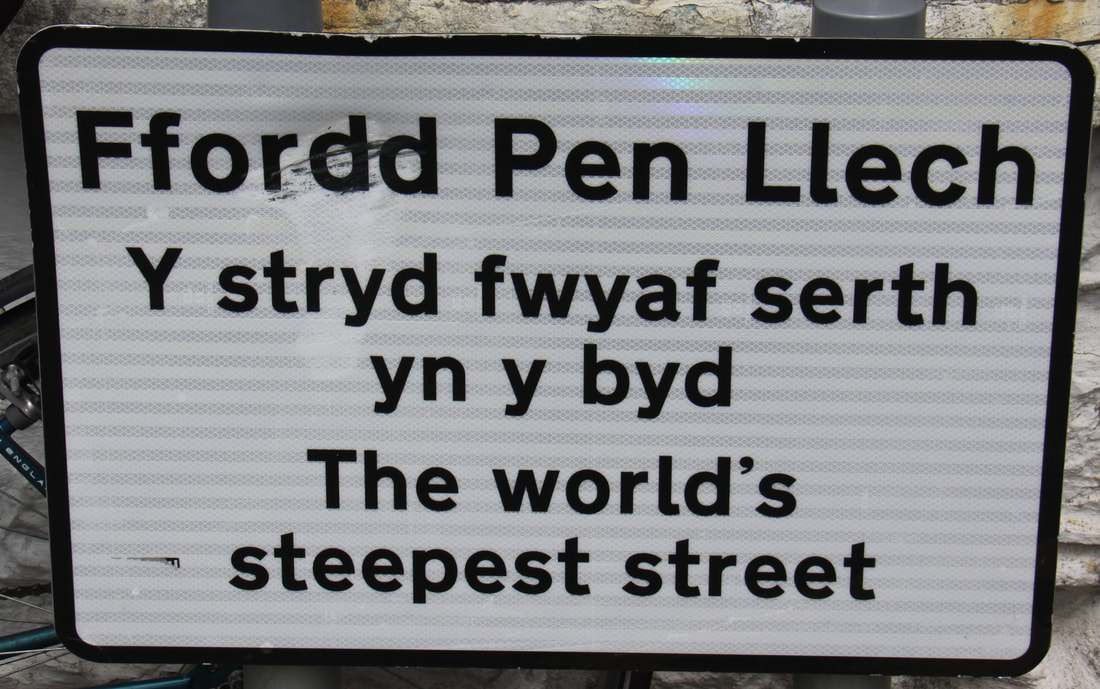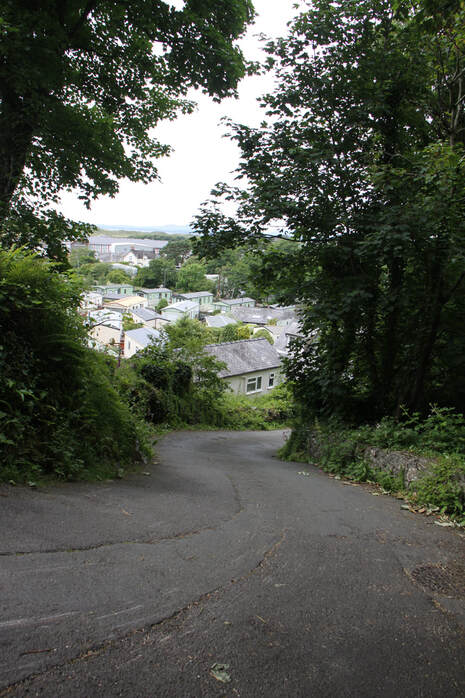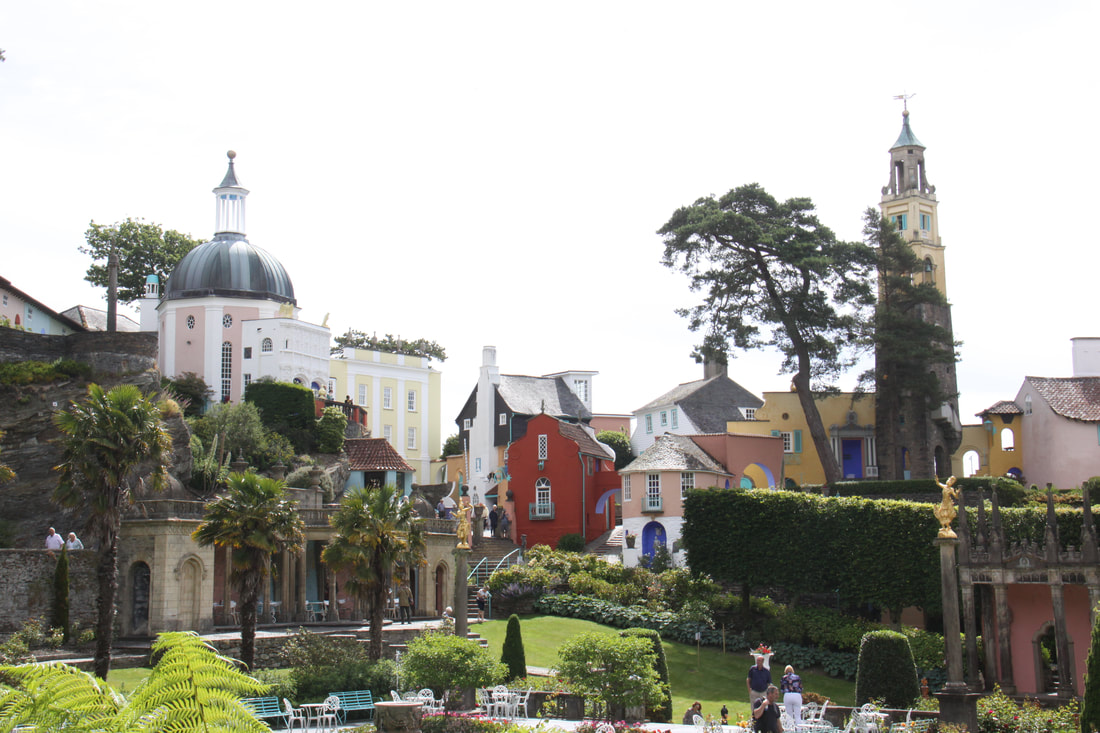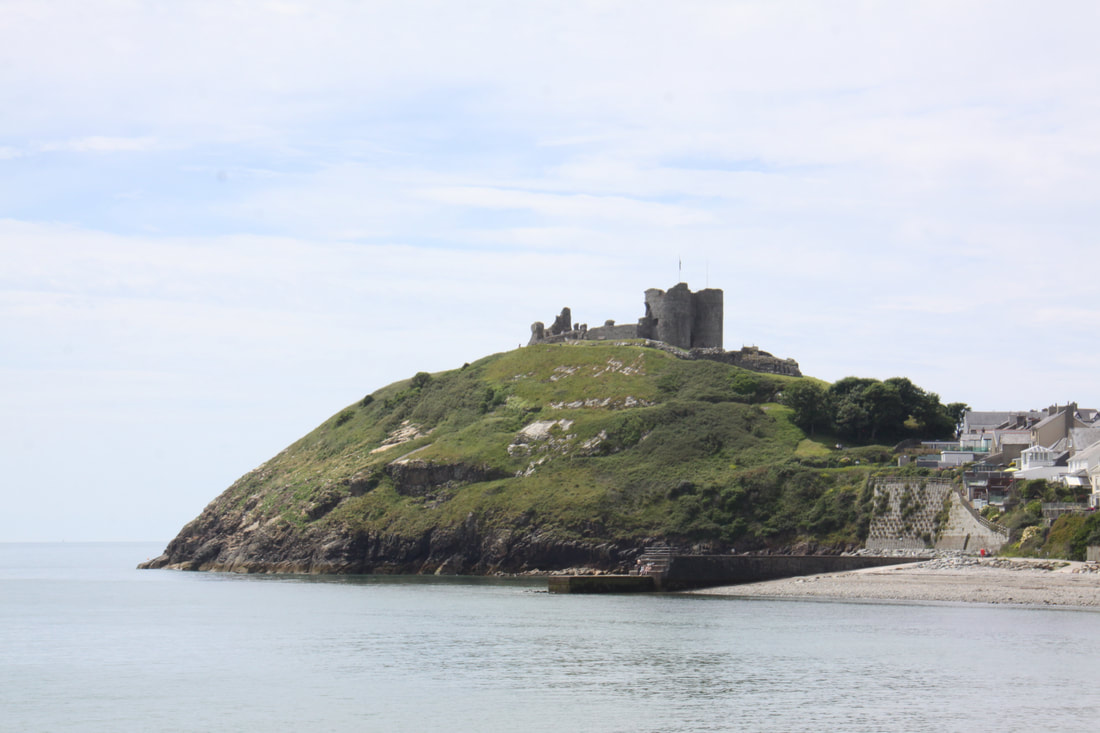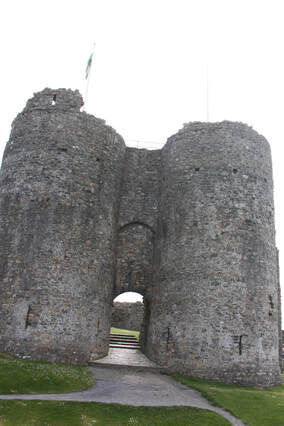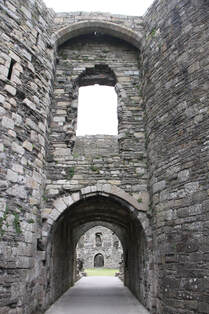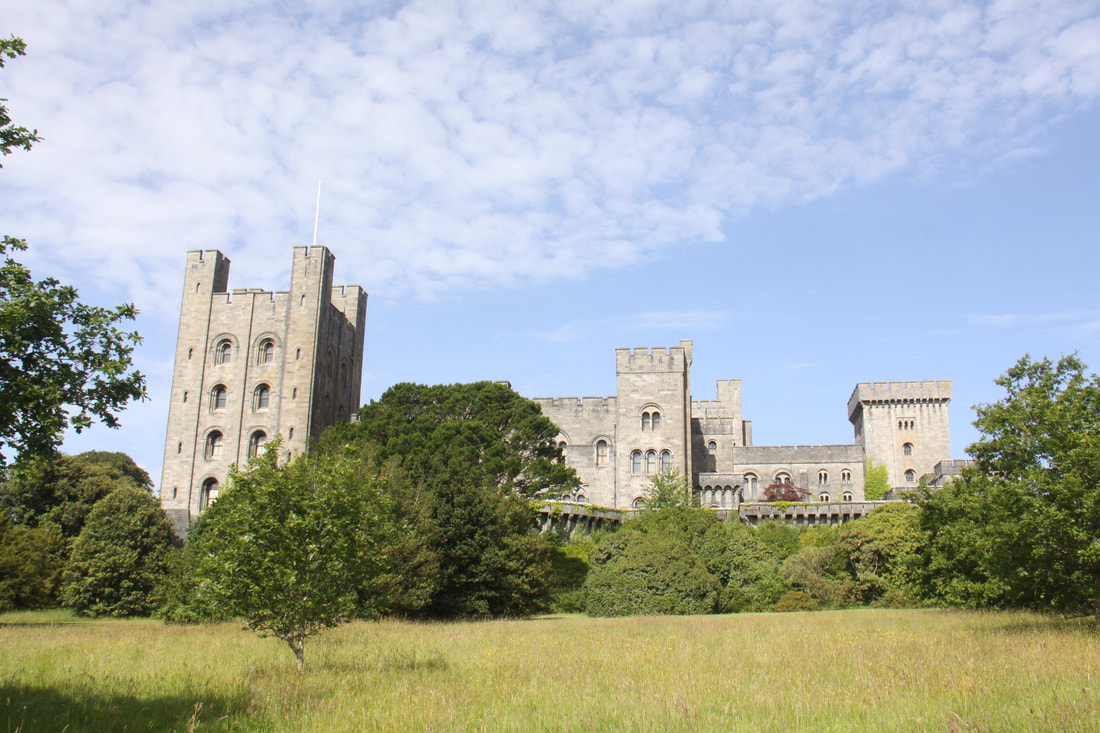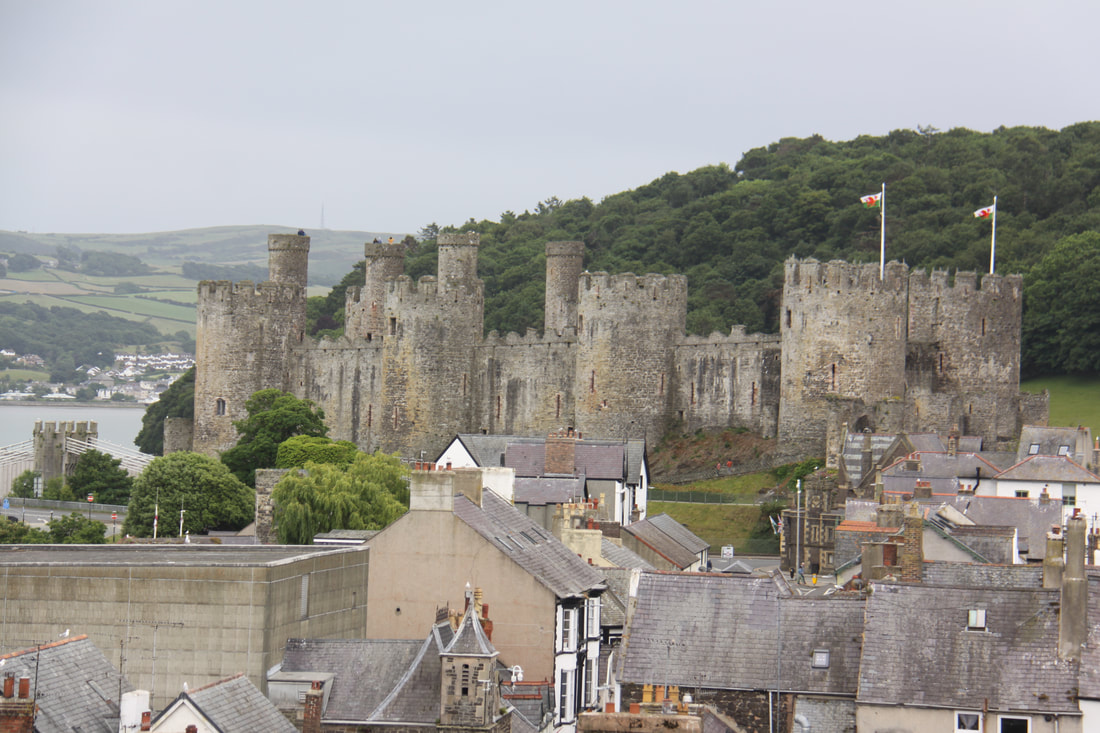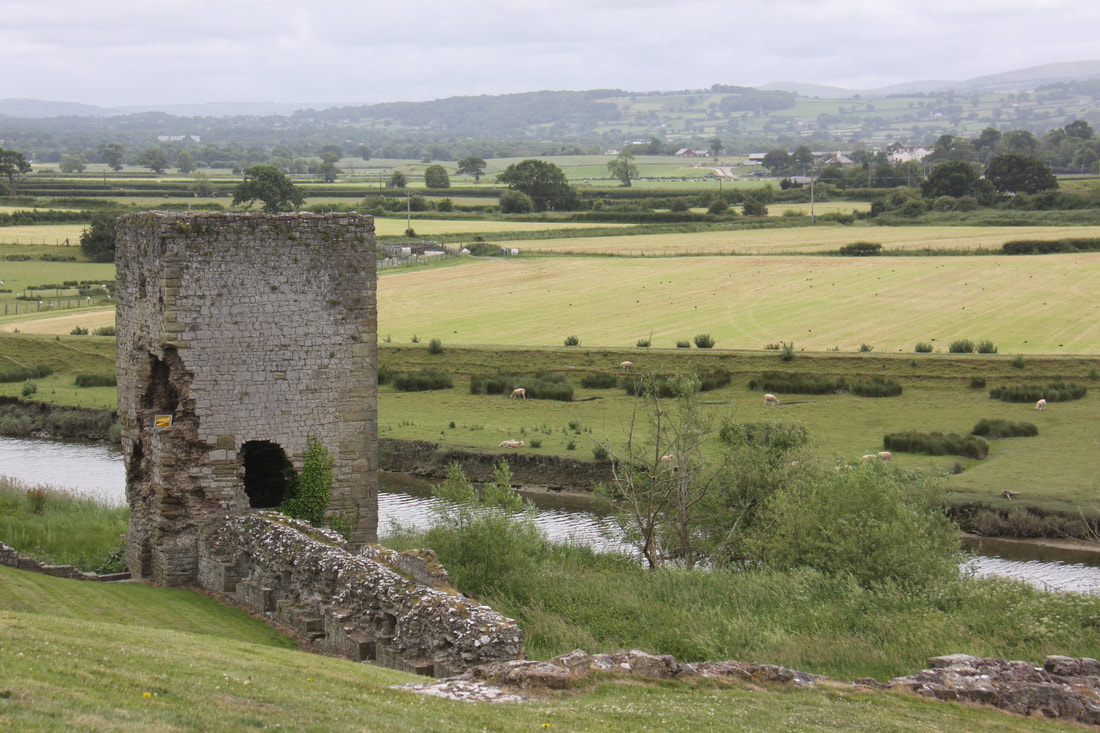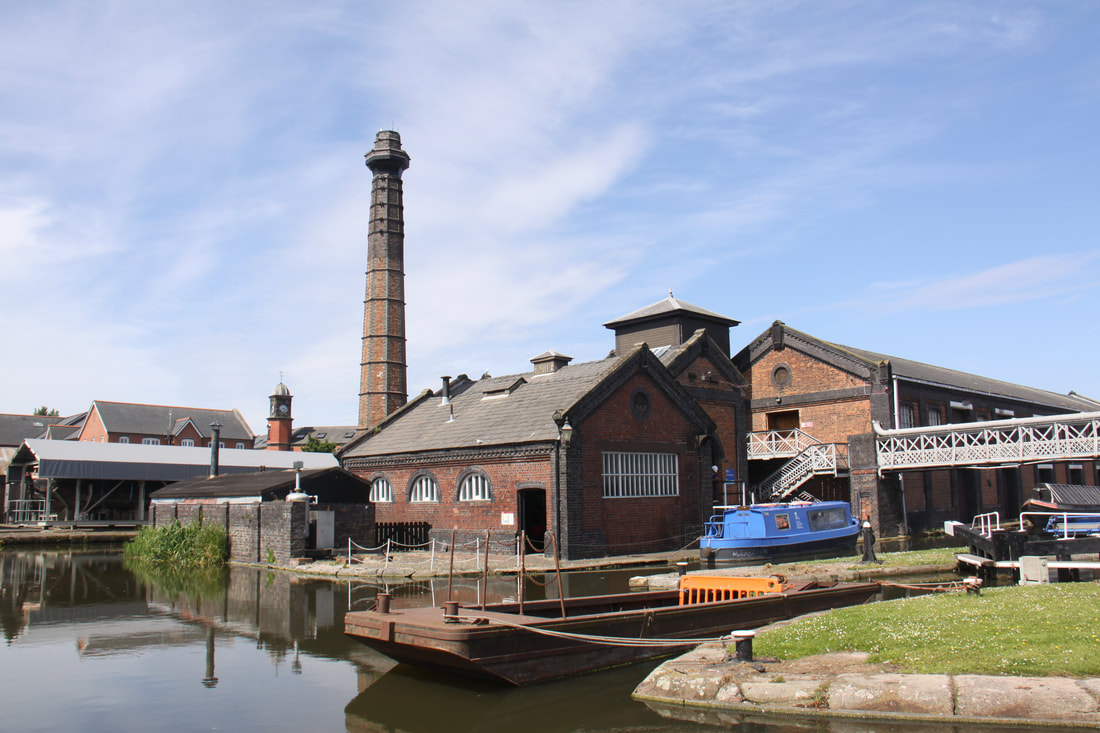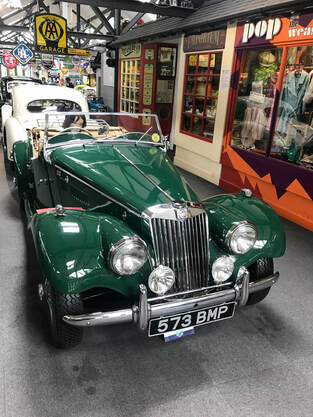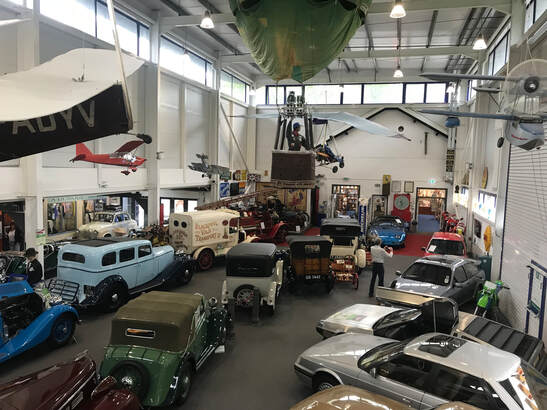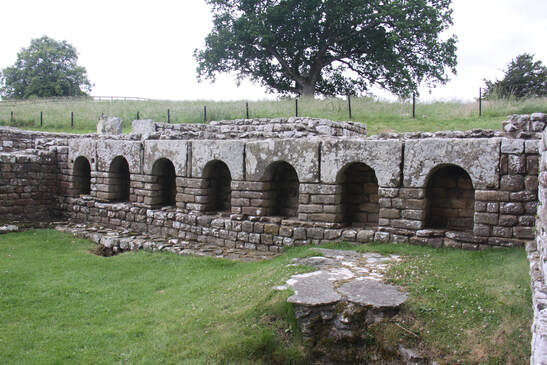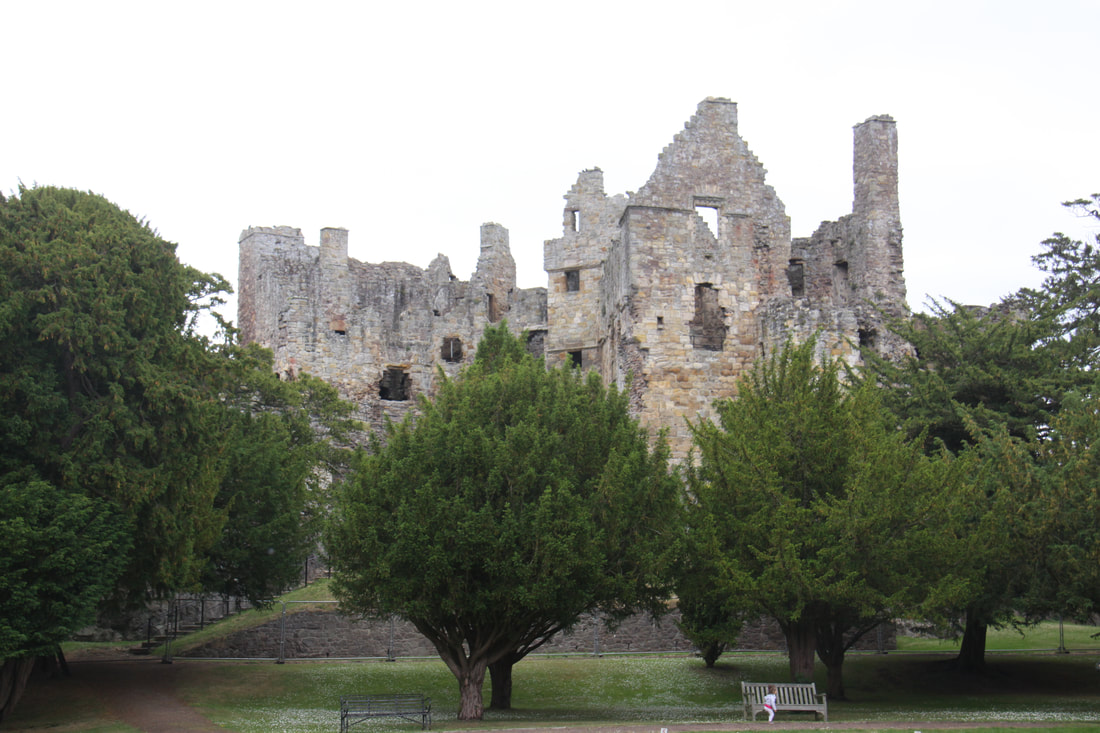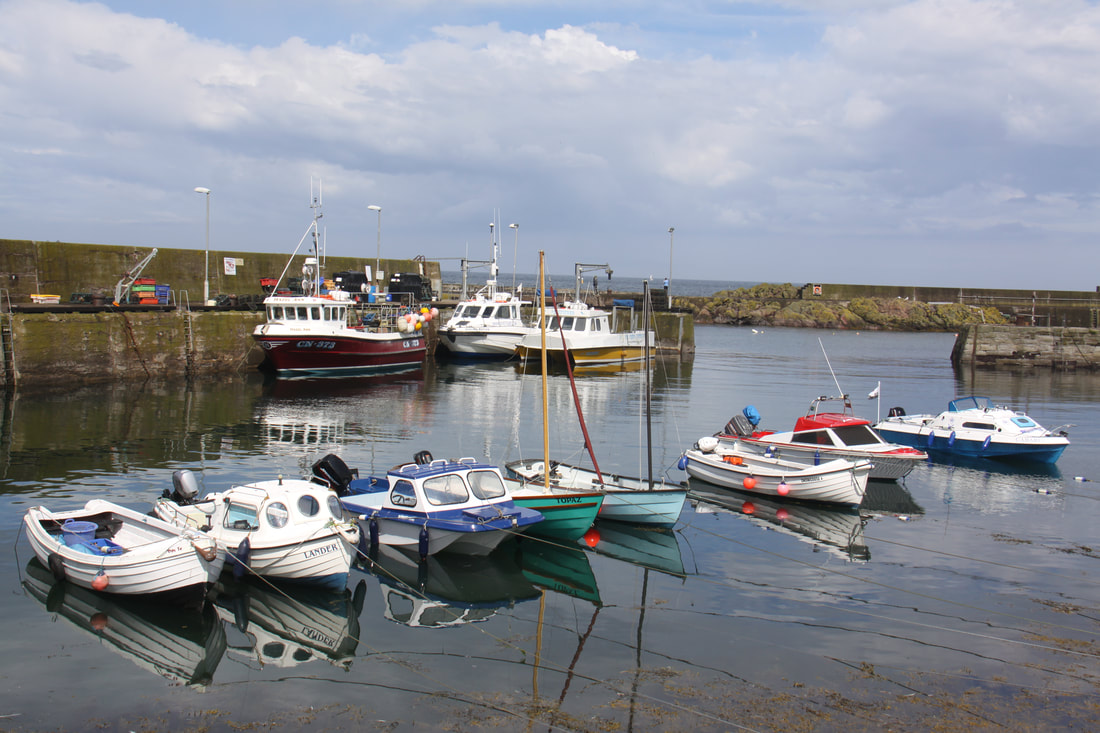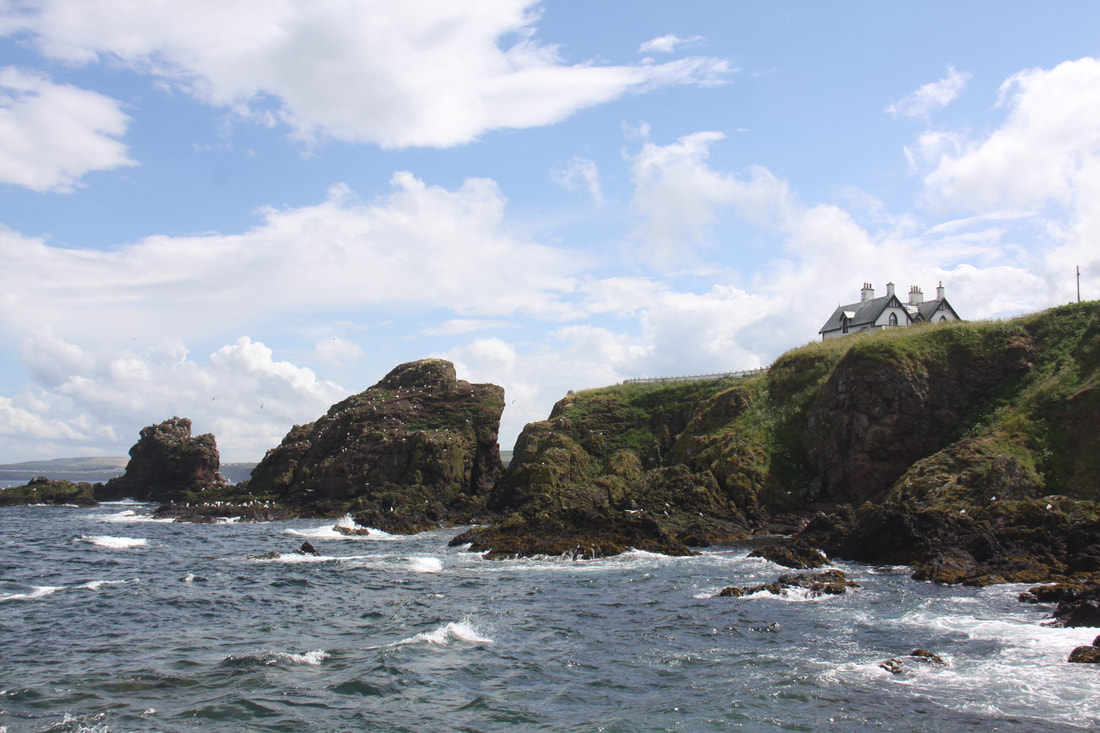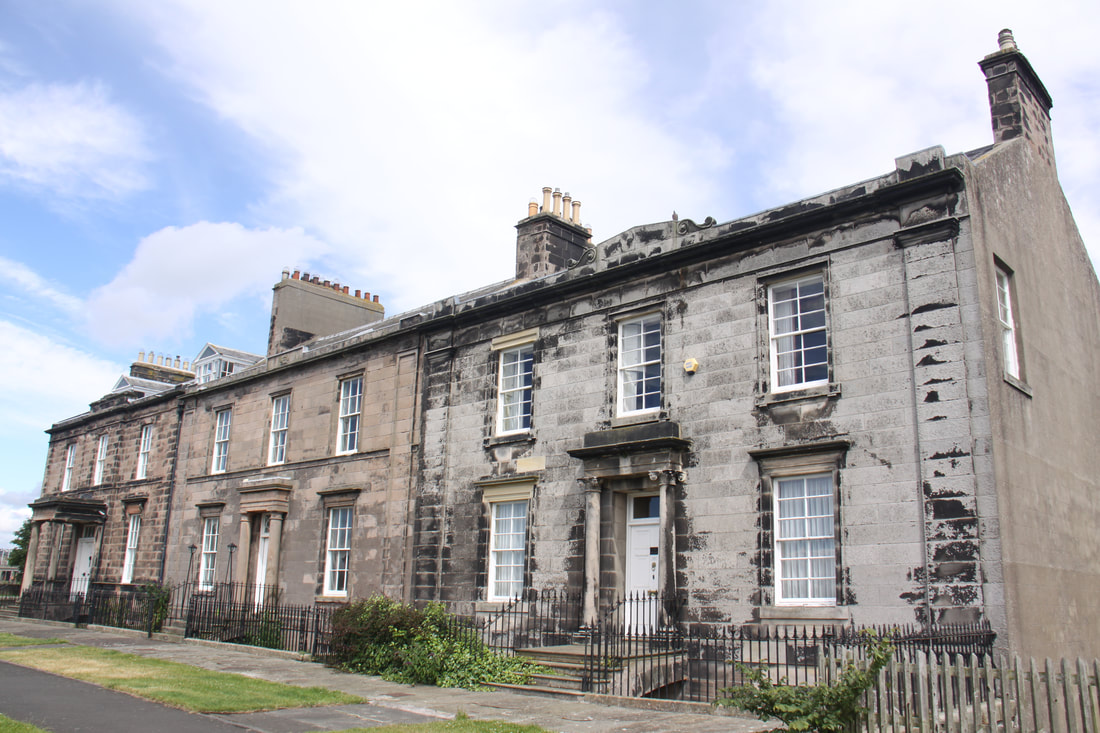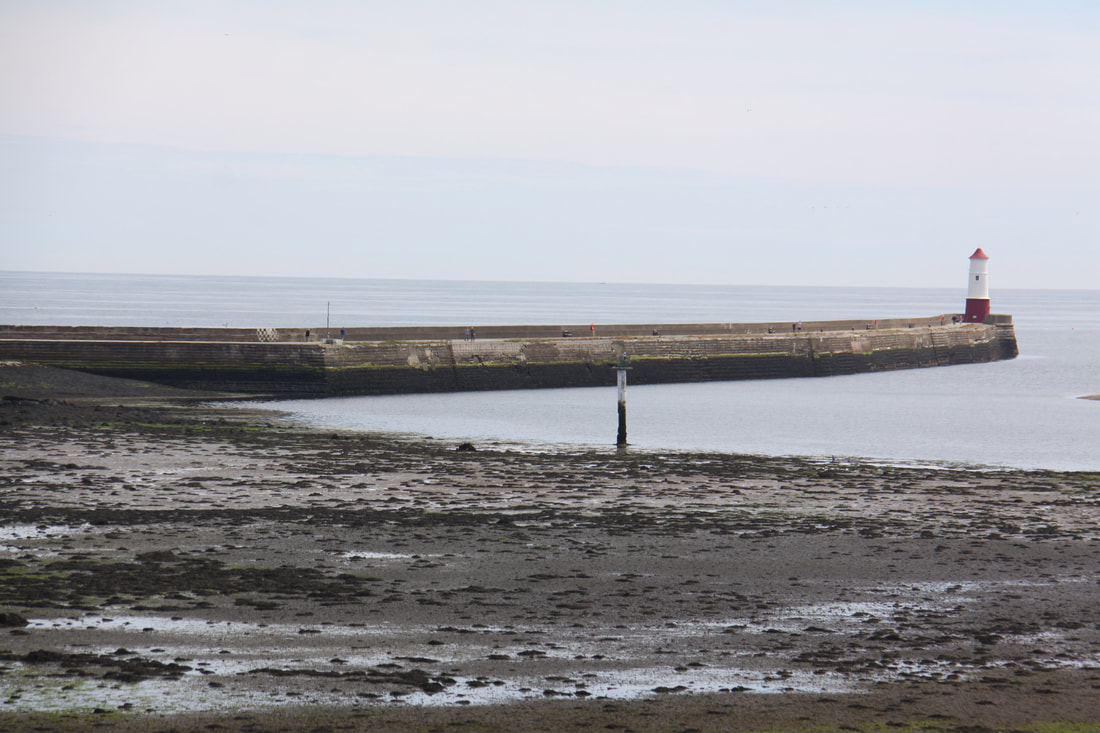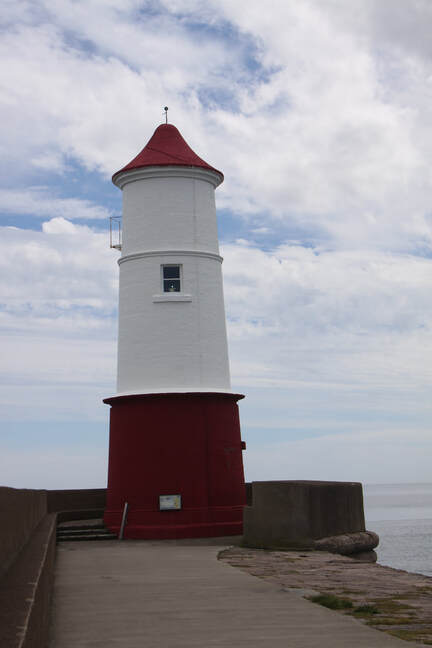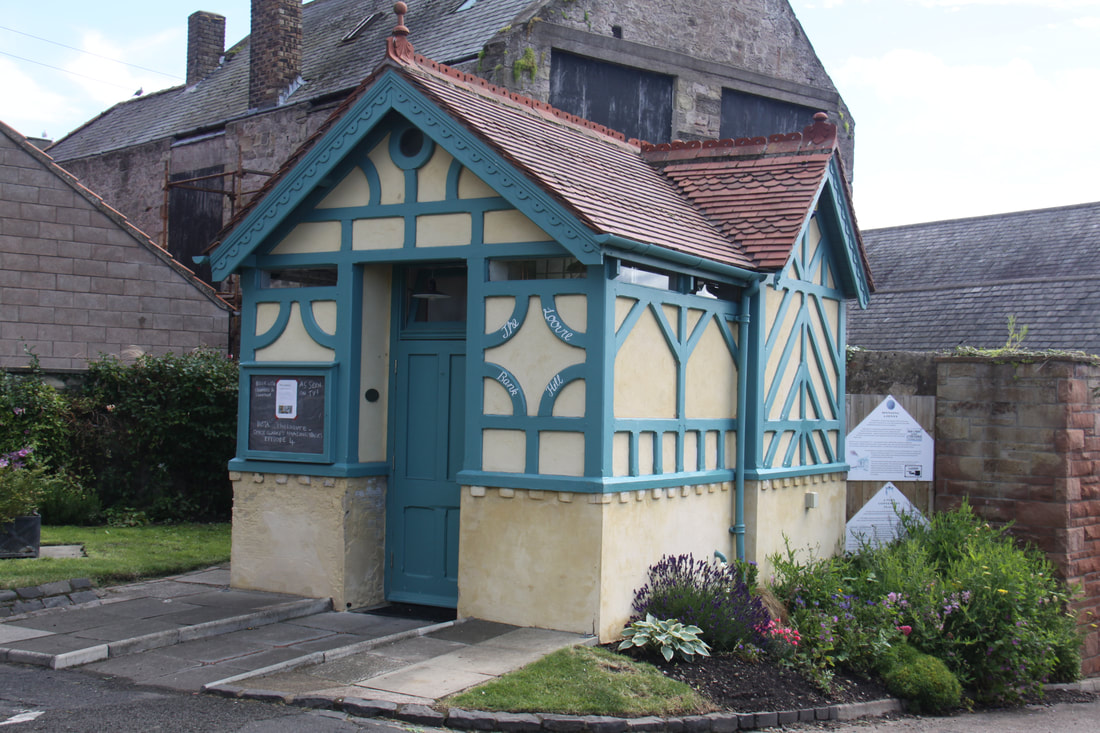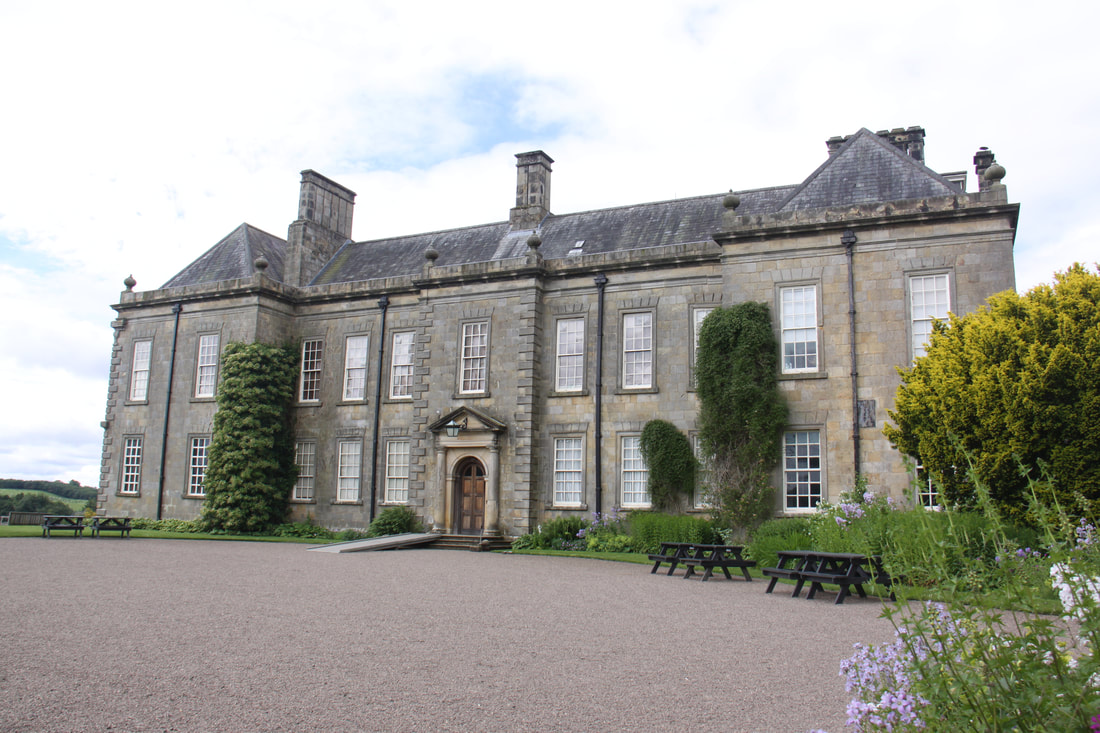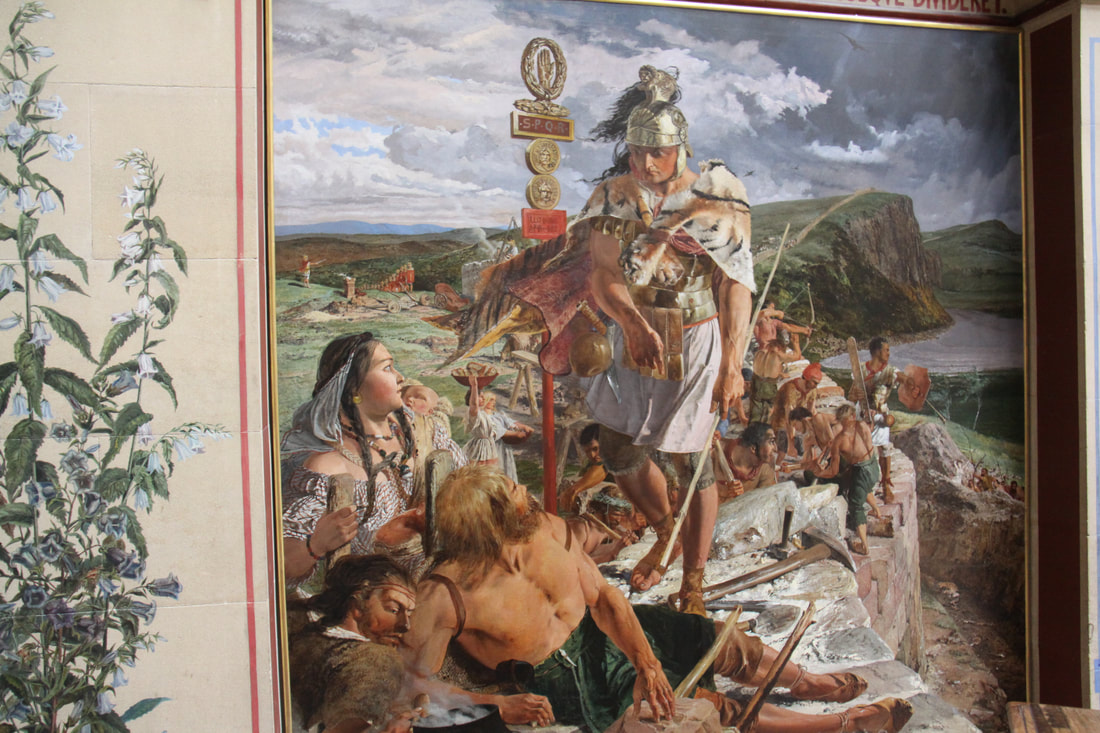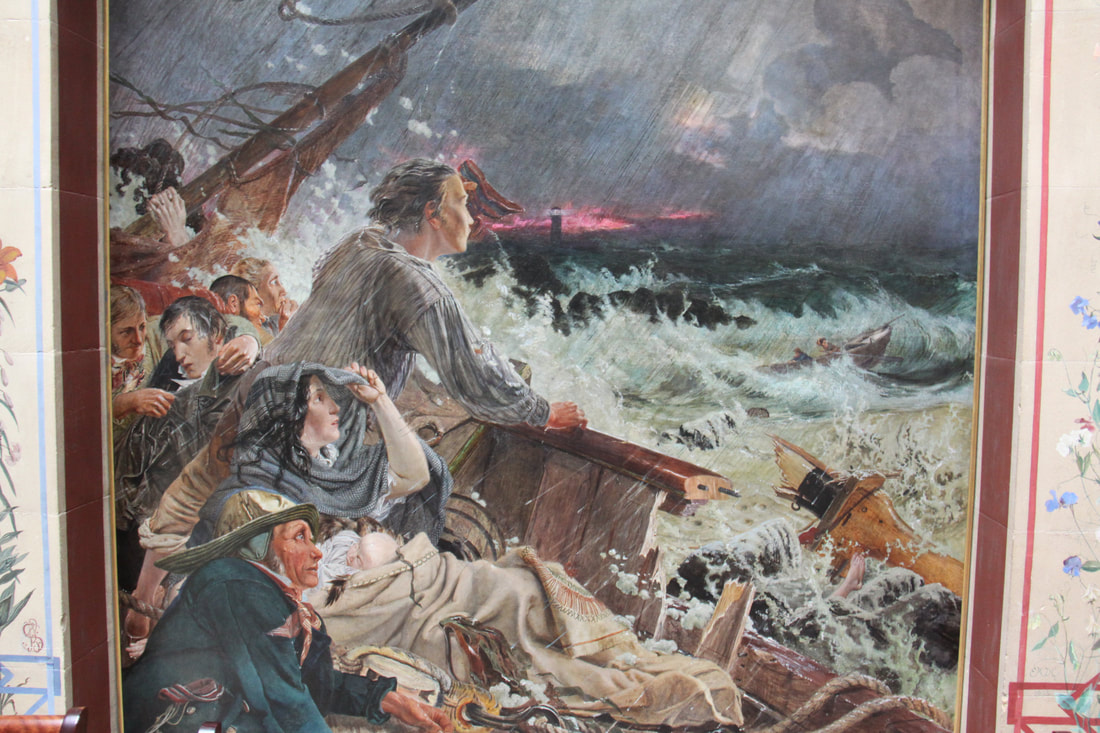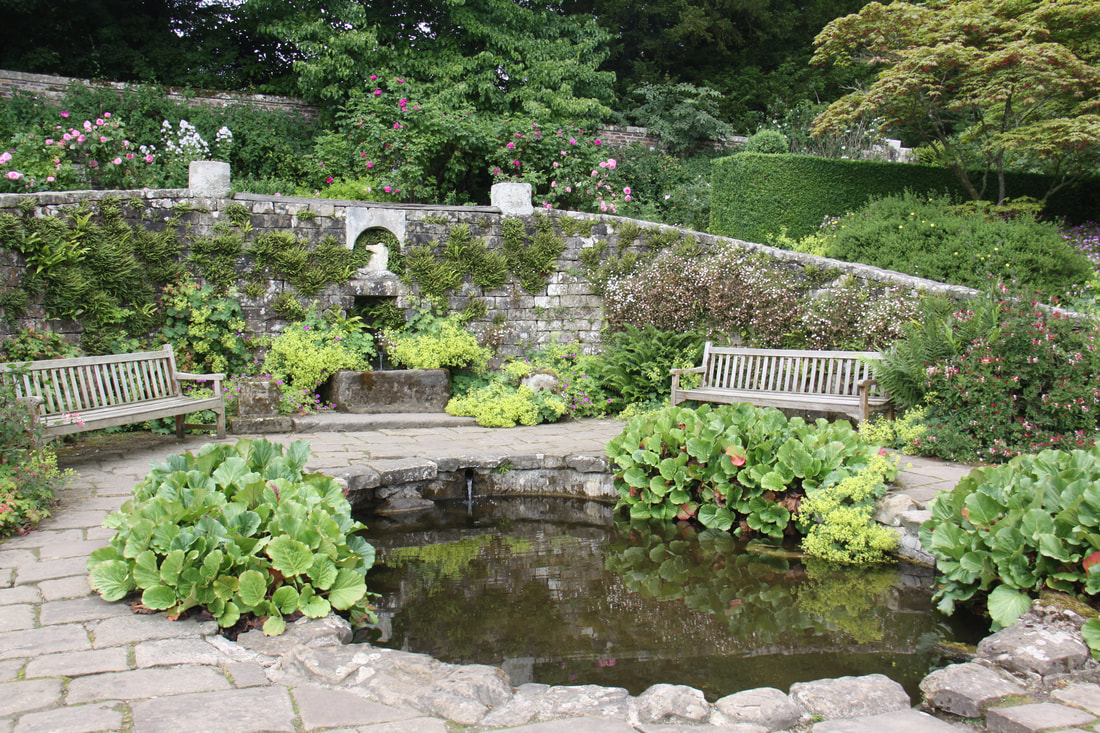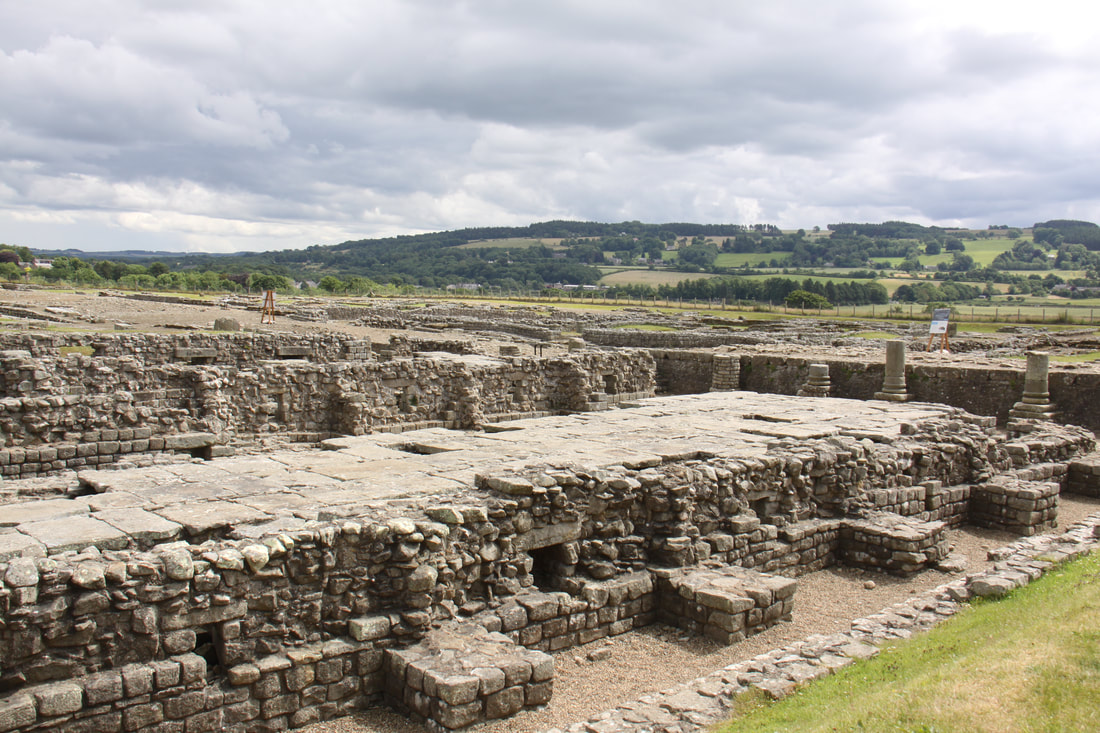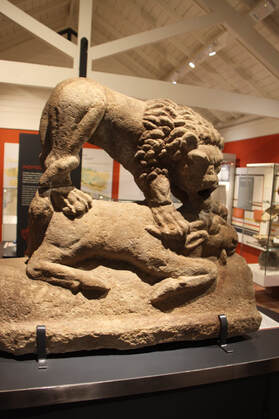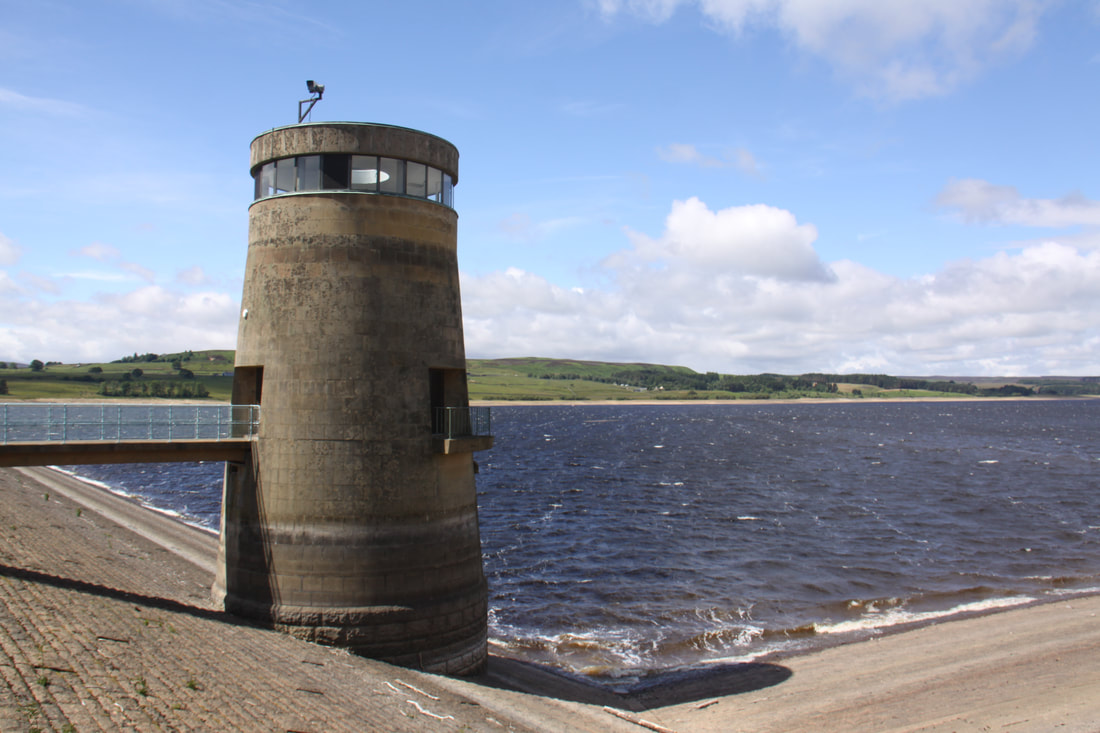North Wales and Northern England
In June 2022 we had originally intended heading north towards Yorkshire and Northumberland, having particularly enjoyed our visit there the previous year. However, having joined CADW on our previous trip to South Wales earlier in the year we decided it made sense to make the most of our membership and take the opportunity to explore the castles of North Wales.
We also wanted to visit the Black and White Villages in Herefordshire. We had intended following the trail on our way home from South Wales the previous month but the weather had been so appalling with absolutely torrential rain that we had given it a miss.
We started the Black and White Village Trail in Leominster. The tourist office gave us a map of the trail together with advice as to which roads were most suitable for a motorhome. The trail took us through Dilwyn, Weobley and Pembridge with its fine 14th century church. We ended the day by visiting Berrington Hall.
We also wanted to visit the Black and White Villages in Herefordshire. We had intended following the trail on our way home from South Wales the previous month but the weather had been so appalling with absolutely torrential rain that we had given it a miss.
We started the Black and White Village Trail in Leominster. The tourist office gave us a map of the trail together with advice as to which roads were most suitable for a motorhome. The trail took us through Dilwyn, Weobley and Pembridge with its fine 14th century church. We ended the day by visiting Berrington Hall.
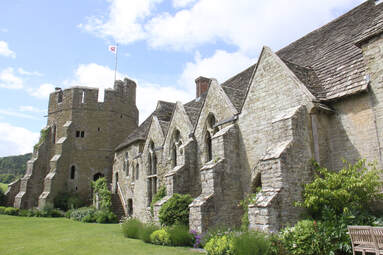
From the Shropshire Discovery Centre at Craven Arms, where we had parked overnight (Brit Stop), we walked across the meadows to Stokesay Castle. Built in 1281 by Lawrence de Ludlow, it was one of the first fortified manor houses built in England.
A two mile circular walk through fields took us back to Craven Arms where we caught the train to Ludlow. Walked into the centre passing many fine black and white timbered buildings. Walked around the perimeter walls of the largely ruined castle.
A two mile circular walk through fields took us back to Craven Arms where we caught the train to Ludlow. Walked into the centre passing many fine black and white timbered buildings. Walked around the perimeter walls of the largely ruined castle.
A short drive took us to Carding Mill Valley, a beautiful valley nestling in the folds of the Long Mynd and the Edwardian reservoir built to provide drinking water for the up and coming spa town of Church Stretton.
The former Roman town of Wroxeter is run by English Heritage which is included in our CADW membership so decided to pay a visit. Built alongside Watling Street there are impressive ruins of the baths and a reconstructed town house.
Stayed overnight at the Camping and Caravan Club site at Ebury Hill which is located on an iron age hill fort and was the site of a World War II camp.
An hour and a half drive took us into Wales and to the World Heritage Site Pontcysyllte Aqueduct. Here the Llangollen Canal crosses the River Dee. The aqueduct was designed by Thomas Telford. Long cast iron troughs were [placed on top of 18 stone pillars to carry the canal 126 feet above the river. We walked part way across the aqueduct's tow path. Sue took a long and steep walk down the steps to the river.
A Morgan Car Meet had clearly taken place nearby and several were parked in the car park of the Telford Inn.
We had a cream tea and parked overnight at the Chapel Tea Room (Brit Stop).
An hour and a half drive took us into Wales and to the World Heritage Site Pontcysyllte Aqueduct. Here the Llangollen Canal crosses the River Dee. The aqueduct was designed by Thomas Telford. Long cast iron troughs were [placed on top of 18 stone pillars to carry the canal 126 feet above the river. We walked part way across the aqueduct's tow path. Sue took a long and steep walk down the steps to the river.
A Morgan Car Meet had clearly taken place nearby and several were parked in the car park of the Telford Inn.
We had a cream tea and parked overnight at the Chapel Tea Room (Brit Stop).
A pretty drive west passing through Llangollen and Bala took us to Dollgellau nestling below impressive Cadair Idris. This was an area that Sue knew well as she spent summer holidays there as a girl with her friend Jane whose father ran the Kings Youth Hostel.
Drove along the south side of Mawddach estuary to Fairbourn where a twelve inch narrow guage railway runs through the village and out to the estuary. Had a lovely walk along the sea front with stunning views across the wide sandy beach, river and surrounding mountains. Parked overnight at Abergynolwyn Station on the Tal-y-llyn railway which was the inspiration for the Thomas the Tank Engine stories.
Drove along the south side of Mawddach estuary to Fairbourn where a twelve inch narrow guage railway runs through the village and out to the estuary. Had a lovely walk along the sea front with stunning views across the wide sandy beach, river and surrounding mountains. Parked overnight at Abergynolwyn Station on the Tal-y-llyn railway which was the inspiration for the Thomas the Tank Engine stories.
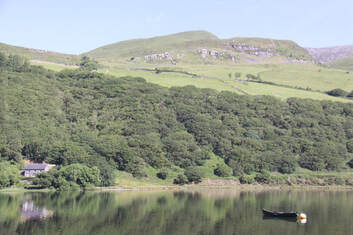
A beautiful drive up the Tal-y-llyn valley with far reaching views across the lake and mountains. Unfortunately we were unable to park in Barmouth at the end of the wooden trestle railway bridge that straddles the Mawddach Estuary
We followed the coast road north to Harlech with its imposing castle dating from1283 AD. Built on a high bluff which was then on the coast, it was part of Edward I's "Iron Ring" of fortresses. We parked at Harlech Leisure Centre, where we also stayed overnight, and walked up the world's steepest street to reach the castle.
Designed and built by Sir Clough Williams-Ellis between 1925 and 1975, Portmeirion is an Italian styled village in Gwynedd and is now a huge tourist attraction. We arrived early to avoid the crowds. The grade 1 and 2 listed buildings tumble steeply down to the coast and are surrounded by ornamental gardens.
Parked on the sea front at Criccieth, an old fashioned, unspoilt resort, and wandered round the castle. Largely ruined, its imposing inner gateway is perched on the top of a hill overlooking the sea.
Drove to Caernarfon to visit the imposing castle, a UNESCO World Heritage site. Major building works and renovations meant some areas were cordoned off. Building of the castle started in 1283. This was to be the strongest link in Edward I's "Iron Ring".
In July 1969 Charles was invested here as the Prince of Wales.
In July 1969 Charles was invested here as the Prince of Wales.
Crossed over the Menai Straits on the Britannia Tubular Bridge, built in 1850 by Robert Stephenson. From a nearby layby we had fine views of the straits, the mid-channel islands, one of which was a burial ground for people who had died attempting to cross the straits, a fish trap and the Menai Suspension Bridge, the World's first suspension bridge built by Thomas Telford in 1826.
Started in 1295, Beaumaris Castle was never completed. Another INESCO World Heritage site, it was designed by Jacques de St. George d'Esperanche, a master military architect from Savoy. It consisted of double concentric battlements and was originally linked to the sea.
Overnight parking on the sea front car park is no longer allowed but we were able to stay on the Castle Car Park, £5 for twelve hours.
Overnight parking on the sea front car park is no longer allowed but we were able to stay on the Castle Car Park, £5 for twelve hours.
Crossed back onto the mainland using the suspension bridge and visited Penrhyn Castle. Originally a country house built in the 1780's it was transformed in the 1820's in the form of a Norman Castle with a five storey keep, using the vast profits from Jamaican slave plantations and the slate quarry in Dyffryn Ogden. The sumptuous state rooms were a stark reminder of how the aristocracy lived whilst those that provided the wealth lived in abject poverty and misery.
As a result of major roadworks and diversions outside Conwy, we ended up driving round in a huge circle and approaching the town twice! We found parking just outside the walled town centre. Visited the castle with its intact outer shell and opulent state rooms.
Wandering around the town, I found the pub where friends and I were refused entry - we were 14 and on school camp! Fortunately, next time I came on school camp I was 17 and allowed in. Viewed the smallest house in Great Britain and visited Plas Mawr, an Elizabethan town house built in 1576 in the Dutch style. Walked along a section of the town walls, fine views over the town and estuary.
Stayed overnight at the Castle View Bar and Restaurant in Deganwy (Brit Stop) which provided a fine meal and lovely views across the estuary.
Wandering around the town, I found the pub where friends and I were refused entry - we were 14 and on school camp! Fortunately, next time I came on school camp I was 17 and allowed in. Viewed the smallest house in Great Britain and visited Plas Mawr, an Elizabethan town house built in 1576 in the Dutch style. Walked along a section of the town walls, fine views over the town and estuary.
Stayed overnight at the Castle View Bar and Restaurant in Deganwy (Brit Stop) which provided a fine meal and lovely views across the estuary.
Located a few miles inland from Conwy, the gardens of Bodnant Hall were laid out in 1874 by the owner Henry Pochin, an industrial chemist who made fame and fortune by inventing a technique which turned soap from brown to white! Despite dull, drizzly weather, we enjoyed strolling round the upper terraced gardens and listened to a performance by a Welsh choir singing beside the Pin Mill.
Constructed between 1277 and 1282, Rhuddlen Castle was the first one built by Edward I. It was designed to be both a garrison and a royal residence. A deep moat, now dry, surrounds the castle and included a dock gate on the riverside, allowing ships to sail up the river, past the Gillet's Castle and into the castle. The castle was badly damaged by Parliamentary forces in 1648 during the Civil War.
Stayed overnight at Billy Jean's Cafe.
Stayed overnight at Billy Jean's Cafe.

A short drive to Flint to visit another of Edward I's castles only to find it was closed despite the opening times board saying it should have been open!
We walked around the inner walls with its fine towers, now mainly ruined, and along part of the moat before heading out of Wales to Delamere Forest.
Took a short walk through the forest before heading to the Camping and Caravan Club Site close by.
Spent a very interesting day at the National Waterways Museum, Ellesmere Park. The museum is located along side the Shropshire Union Canal and the Manchester Ship Canal. It is very much a working museum where barges are restored. A small flight of locks linked the upper and lower basins. Original canal side buildings have been restored and are now a hive of activity. A craft group were meeting in the restaurant which provided a very tasty lunch. The fruits of their labour were on display in the museum, including a knitted bicycle and a knitted horse!

What should have been an easy journey next day to visit the Anderton Boat Lift turned into a long winded tour of a housing estate all because of one road closure! When we did reach it we discovered that there was a problem and the lift was out of action. We hung around all morning and had an early lunch. Still no boat lift working! Time to head on.
Our journey further north was complex but eventually we negotiated our way round the jumble of motorways - all busy - until we reached the ring road round Bolton. From there we took a high moorland route to our overnight Brit Stop near Darwen - the Ramblers Country Cafe.
Next morning we had a huge fried breakfast at the Ramblers Country Cafe and a leisurely start to the day before heading off for the Lake District. We arrived at lunch time and spent the afternoon relaxing at Windermere Caravan and Camping Club Site. Dull and cloudy, very heavy rain finally came late afternoon and continued all night.
Sue's Birthday. We had planned on a cruise round Windermere, followed by a walk and a nice meal. However, it was still very gloomy, the rain had certainly not done with us yet. After food shopping in Booths, both Windermere and Bowness in Windermere were very busy and congested, we decided instead to drive south along the shore of Lake Windermere and visit the Lakeland Museum.
Absolutely incredible. Crammed full of every conceivable item of motoring memorabilia including cars, motorbikes, pedal cycles and aeroplanes. There were shops and garages and a separate display featured recreations of Sir Malcolm and Donald Campbell's Bluebird racing cars. Every item was documented with its history. Spent most of the day there and had lunch in the restaurant.
Our journey further north was complex but eventually we negotiated our way round the jumble of motorways - all busy - until we reached the ring road round Bolton. From there we took a high moorland route to our overnight Brit Stop near Darwen - the Ramblers Country Cafe.
Next morning we had a huge fried breakfast at the Ramblers Country Cafe and a leisurely start to the day before heading off for the Lake District. We arrived at lunch time and spent the afternoon relaxing at Windermere Caravan and Camping Club Site. Dull and cloudy, very heavy rain finally came late afternoon and continued all night.
Sue's Birthday. We had planned on a cruise round Windermere, followed by a walk and a nice meal. However, it was still very gloomy, the rain had certainly not done with us yet. After food shopping in Booths, both Windermere and Bowness in Windermere were very busy and congested, we decided instead to drive south along the shore of Lake Windermere and visit the Lakeland Museum.
Absolutely incredible. Crammed full of every conceivable item of motoring memorabilia including cars, motorbikes, pedal cycles and aeroplanes. There were shops and garages and a separate display featured recreations of Sir Malcolm and Donald Campbell's Bluebird racing cars. Every item was documented with its history. Spent most of the day there and had lunch in the restaurant.

Stayed overnight at The Bridge Inn near Muncaster.
First stop next day was at Whitehaven where we visited "The Rum Story" exhibition, an excellent and very interesting museum explaining how Whitehaven became a centre of rum trading. Interactive displays followed the route from Antigua and showed the appalling conditions suffered by the slaves both in transit to and on the plantations, as well as an insight into the lives of the sailors and the plantation owners. The process of producing run from sugar cane was explained and the effects of its consumption in both UK and USA, including the prohibition era, were highlighted. The story of the Jefferson family who owned plantations as well as the rum factory in Whitehaven was also told. We had expected a mention of Rum Nicky, the local variation of Christmas cake, but there was none!
We had hoped to spend a bit longer wandering around Whitehaven but , as it was Saturday, everywhere was very busy and we couldn't find anywhere to park.
We stayed overnight on CL north of Keswick. Next day we had rain and drizzle all day long. Spent time food shopping in Keswick. We also bought Sue a new pair of walking shoes. Her old ones were very worn and the soles were thin - she had slipped several times on wet paving slabs as well as on wet grass.
Drove north to Carlisle then on to Warwick- on- Eden for our overnight stop at the Queens pub. It rained almost continually overnight and was still raining the following morning. A short drive took us to Hadrian's Wall were we had planned to stop at Birdoswald Roman Fort, where there is an impressive section remaining of the wall.
As it was raining so heavily we drove along the route of the wall to Chesters Roman Fort. Here a local landowner - John Clayton - excavated the ancient ruins on his land and unearthed Britain's best preserved military bath house.
First stop next day was at Whitehaven where we visited "The Rum Story" exhibition, an excellent and very interesting museum explaining how Whitehaven became a centre of rum trading. Interactive displays followed the route from Antigua and showed the appalling conditions suffered by the slaves both in transit to and on the plantations, as well as an insight into the lives of the sailors and the plantation owners. The process of producing run from sugar cane was explained and the effects of its consumption in both UK and USA, including the prohibition era, were highlighted. The story of the Jefferson family who owned plantations as well as the rum factory in Whitehaven was also told. We had expected a mention of Rum Nicky, the local variation of Christmas cake, but there was none!
We had hoped to spend a bit longer wandering around Whitehaven but , as it was Saturday, everywhere was very busy and we couldn't find anywhere to park.
We stayed overnight on CL north of Keswick. Next day we had rain and drizzle all day long. Spent time food shopping in Keswick. We also bought Sue a new pair of walking shoes. Her old ones were very worn and the soles were thin - she had slipped several times on wet paving slabs as well as on wet grass.
Drove north to Carlisle then on to Warwick- on- Eden for our overnight stop at the Queens pub. It rained almost continually overnight and was still raining the following morning. A short drive took us to Hadrian's Wall were we had planned to stop at Birdoswald Roman Fort, where there is an impressive section remaining of the wall.
As it was raining so heavily we drove along the route of the wall to Chesters Roman Fort. Here a local landowner - John Clayton - excavated the ancient ruins on his land and unearthed Britain's best preserved military bath house.

Next day, a long drive north through the Cheviot Hills of Northumberland and the Scottish Borders took us to southern coast of the Firth of Forth. Stopped at the Archerfield Walled Garden on the North Berwick coastal route. Strolled round the estate including the Willow and Fairy Walks.
Parked overnight on the estate. The security guard called to check we were okay. Lots of bird life as well as deer in the fields next to us.
The following morning we visited Dirleton Castle and gardens. The 13th century castle was closed for renovation but we walked round the gardens. Tried to park on the seafront at North Berwick but everywhere was far too cluttered. Continued further along the coast and visited Tantallon Castle. This too was closed for repairs but the ruins were very impressive. The original castle, built in 1350 along the lines of a French chateau, is located on a headland jutting out into the Firth of Forth. Bass Rock lies just off shore and further out to sea the Isle of May was just visible.
Parked overnight on the estate. The security guard called to check we were okay. Lots of bird life as well as deer in the fields next to us.
The following morning we visited Dirleton Castle and gardens. The 13th century castle was closed for renovation but we walked round the gardens. Tried to park on the seafront at North Berwick but everywhere was far too cluttered. Continued further along the coast and visited Tantallon Castle. This too was closed for repairs but the ruins were very impressive. The original castle, built in 1350 along the lines of a French chateau, is located on a headland jutting out into the Firth of Forth. Bass Rock lies just off shore and further out to sea the Isle of May was just visible.
A little further along the coast was Dunbar, a busy little town. From there we headed to St. Abbs, an idyllic little fishing harbour which we had visited the previous year. We were unimpressed to discover that the overnight parking charge had gone up from £10 to £15 in the space of six months, especially as daytime charges also applied. We had no food for our evening meal, there are no shops nearby and the cafe closed at 4 o'clock in the afternoon. A delightful little spot but we probably won't be coming back!
A short drive south took us to Berwick-upon-Tweed where we parked in the large, free car park just outside the town walls. On our visit last year we had walked round the town walls clockwise but had missed out the final section. This time we went round the other way, starting with the section we had missed. We also walked out along the pier to the lighthouse. Discovered a wonderful restored Victorian lavatory built in 1899. Last year we had noticed that a lot of the tourist signs were very faded and we were pleased to see that they had been renewed.
Drove south along the A1 to Belford for our overnight halt at Sunnyhills farm shop. Heavy rain again overnight.
Drove south along the A1 to Belford for our overnight halt at Sunnyhills farm shop. Heavy rain again overnight.

A short drive took us through Bamber with its imposing castle. Last year when we visited the Grace Darling Museum was closed. Unfortunately it was closed again when we passed today. Drove on to the little fishing village of Seahouses. From here boat trips take you out to the Farne islands. Despite appalling weather boats were still going out to sea but could not land on the island because of bird Flu. Overnight at the Camping and Caravan Club Site at Beadnell Bay. Soon after our arrival the heavens opened and the rain hammered down all evening and well into the night.
We woke to the threat of yet more rain but luckily, apart from a little drizzle around lunchtime, it stayed dry. Firstly we headed back to Seahouses to buy some groceries before heading back south to Warkworth.
Warkworth Castle was unique in so much as its keep was almost intact as were most of the rooms. However as they were completely empty you had to use your imagination to picture what life would have been like inside the castle.
From Wankworth we made a brief deviation into Alnmouth but no suitable short term parking was available so we followed the one way system back out of the village. A picturesque drive across the high moors with far reaching views took us through Rothbury and on to Fontburn Reservoir and our overnight stop.
En route south we discovered Wallington, a National Trust property. At the heart of the extensive estate was the main house, once the home of the Trevelyan family. Only the ground floor was open to visitors. Each room was well documented and looked as though the family had just left. A room full of curiosities, another had a collection of doll's houses, but the central atrium with its series of murals depicting historical scenes was the jewel in the crown.
An exploration of the extensive grounds led us past pretty ponds to the large walled gardens with their beautiful and colourful display of flowers.
We woke to the threat of yet more rain but luckily, apart from a little drizzle around lunchtime, it stayed dry. Firstly we headed back to Seahouses to buy some groceries before heading back south to Warkworth.
Warkworth Castle was unique in so much as its keep was almost intact as were most of the rooms. However as they were completely empty you had to use your imagination to picture what life would have been like inside the castle.
From Wankworth we made a brief deviation into Alnmouth but no suitable short term parking was available so we followed the one way system back out of the village. A picturesque drive across the high moors with far reaching views took us through Rothbury and on to Fontburn Reservoir and our overnight stop.
En route south we discovered Wallington, a National Trust property. At the heart of the extensive estate was the main house, once the home of the Trevelyan family. Only the ground floor was open to visitors. Each room was well documented and looked as though the family had just left. A room full of curiosities, another had a collection of doll's houses, but the central atrium with its series of murals depicting historical scenes was the jewel in the crown.
An exploration of the extensive grounds led us past pretty ponds to the large walled gardens with their beautiful and colourful display of flowers.
After lunch we headed south to Corbridge to view the excavations of the Roman town, much of which still lies buried under fields.
Overnight at North Acomb farm shop.
Overnight at North Acomb farm shop.
Woken by the dawn chorus which included peacocks! Due to high winds we decided not to take our planned route over the high fells - instead we headed to Derwent Water.
Took a couple of short walks. First we headed across the imposing dam and followed the reservoir round clockwise part of the way before returning the same way. Then, after lunch, we followed the shore in the opposite direction. We were heading into the wind and it was hard work. it was not so interesting this side as the level of water was low and we were often a long way from the water.
Stayed overnight on the visitor centre car park.
Took a couple of short walks. First we headed across the imposing dam and followed the reservoir round clockwise part of the way before returning the same way. Then, after lunch, we followed the shore in the opposite direction. We were heading into the wind and it was hard work. it was not so interesting this side as the level of water was low and we were often a long way from the water.
Stayed overnight on the visitor centre car park.
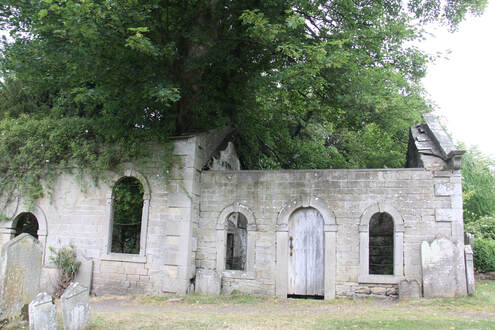
A beautiful drive over high moorland from Derwent reservoir across the north Pennines down into Weardale, then 0n over until once more dropping down, this time into Teesdale.
We stopped at Eggleston hall nursery and gardens. A trail through the gardens leads to a ruined chapel dating back to 1612.
Our final night's stop was at Barnard Castle Camping and Caravan Club Site. Next day we drove home,
[click] to return to Home page
We stopped at Eggleston hall nursery and gardens. A trail through the gardens leads to a ruined chapel dating back to 1612.
Our final night's stop was at Barnard Castle Camping and Caravan Club Site. Next day we drove home,
[click] to return to Home page


